Magna Mater
small sculptures 1988 - 1990
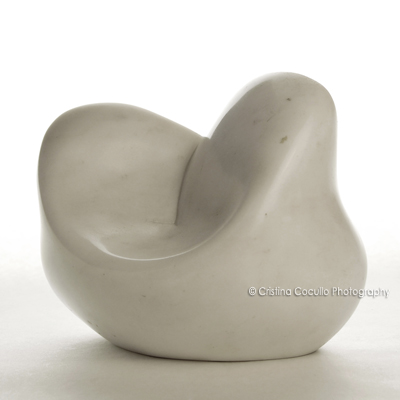
The Bones of the Great Mother
Extract from the book Benevelli: Magna Mater by Vincenzo Guarracino, published by Vismara Arte, Milan, 1991
Obsolete, oblong, ovoid, vulvar shapes: clots, of stone, little bigger than one’s fist, which the intelligence of the master’s hand has modelled, impressing in the stone a design already inscribed in the mind, “something” that re-awakens, with sinuous energy, an intricate complexity of impulses, a timeless rapport with needs, desires, fears, delineating in the history of each an essential mythical image. Thus, matter and form compose a message of arcane resonance echoing back to an eternal, yet familiar, past, to duration of time and, and yet, at the same time, to instantaneousness: to a figure, enveloped in a sacred radiance and imbued with an intricate complexity of private emotions and sentiments. In short, clots of stone in a dream as old as thought itself and projecting itself in the language of symbols: not allegory, but symbols. Symbols are a way of looking at reality, a perspective on the world according to which everything is filtered subjectively from an angle that is peculiar to the existential experience, the “myth” of the individual, every individual; whereas allegory, on the contrary, is an intellectualist construction, a “restructuring” of reality, in which an homologous reality is indicated in something else. What does Benevelli do with these clots of stone? He gives them the title, without hesitation, of the Great Mother: he carves out and gives shape to his symbols; he breaks the allegory into pieces. These stones are not like the Great Mother, they do not represent the Great Mother: they are the Great Mother.
Vincenzo Guarracino is a poet and a scholar of Ancient Greek and Latin, he published a number of books on Ancient and Classical Literature and Mythology
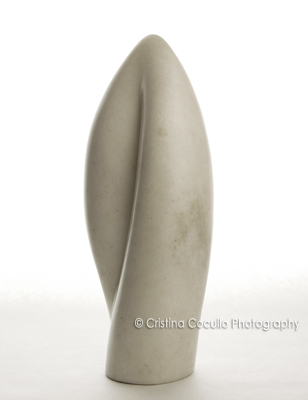
1 Magna Mater, 1989 marble, h/cm 20
Le Ossa della Gran Madre
dal libro Benevelli: Magna Mater, di Vincenzo Guarracino, pubblicato da Vismar Arte, Milano, 1991
Forme obsolete, oblunghe, ovoidi: grumi di pietra poco piu’ grandi di un pugno, che l’intelligenza della mano ha modellato inmprimendo nella materia un disegno inscritto nella mente, il disegno di un “qualcosa” che con sinuosa energia risveglia un complesso nodo di pulsioni, un rapport senza tempo con bisogni, desideri, timori, che nella storia di ognuno delineano un’immagine mitica essenziale. Materia e forma compongono cosi un messaggio di arcane risonanze, rinviando a un qualcosa di eterno eppure familiar, alla durata e al insieme all’istantaneita’: ad una figura, circonfusa di un’aureola sacrale e investita di un complesso nodo di private emozioni e sentimenti. Grumi insomma di un sogno, che ha l’eta’ del pensiero e si proietta all’esterno col linguaggio del simbolo: non allegorie, ma simboli. Il simbolo e’ un modo di guardare, una prospettiva aperta sul mondo, per cui tutto e’ filtrate soggettivamente attraverso un’ angolazione peculiar all’esperienza esistenziale, al “mito” , dell’individuo, di ogni individuo; al contrario, l’allegoria e’ una costruzione intellettualistica, una “ristrutturazione” della realta’, per la quale si indica un omologo in qualcos’altro. Cosa fa Benevelli con queste pietre-grumi? Le intitola senza esitazioni la Grande Madre: scava e plasma dei simboli; sbriciola l’allegoria. Queste pietre non sono come la Grande Madre, non rapresentano la Grande Madre: sono la Grande Madre.
Vincenzo Guarracino, poeta, grecista e latinista, ha pubblicato numerosi libri sulla letteratura classica e la mitologia.
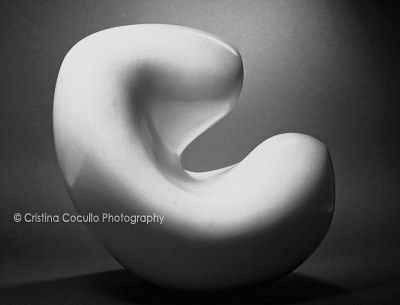
2 Magna Mater, 1989 marble, cm 18x14x14
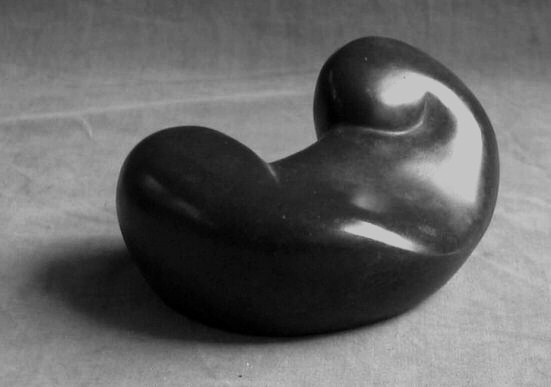
3 Magna Mater, 1988 bronze, cm 17x15x10

4 Magna Mater, 1989 marble, cm 18x14x14
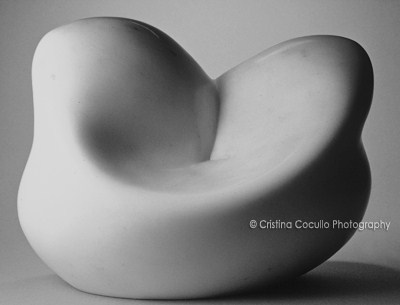
5 Magna Mater, 1989 marble, cm 20x13x13
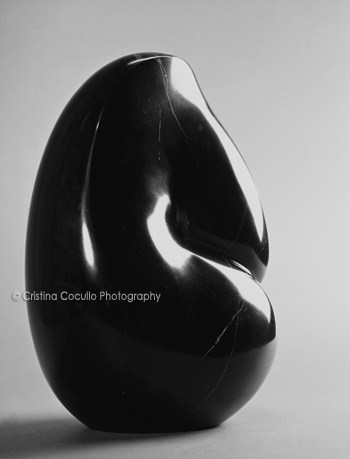
6 Magna Mater, 1988 marble, cm 20x13x13
photos © Cristina
Cocullo
photo 3/4 © Tiziano Alderighi
Images Copyright © 2011 The Heirs of Giacomo Benevelli, © Cristina Cocullo, © Tiziano Alderighi - All Rights Reserved
Texts Copyright © Vincenzo Guarracino, © 2011 The Heirs of Giacomo Benevelli - All Rights Reserved